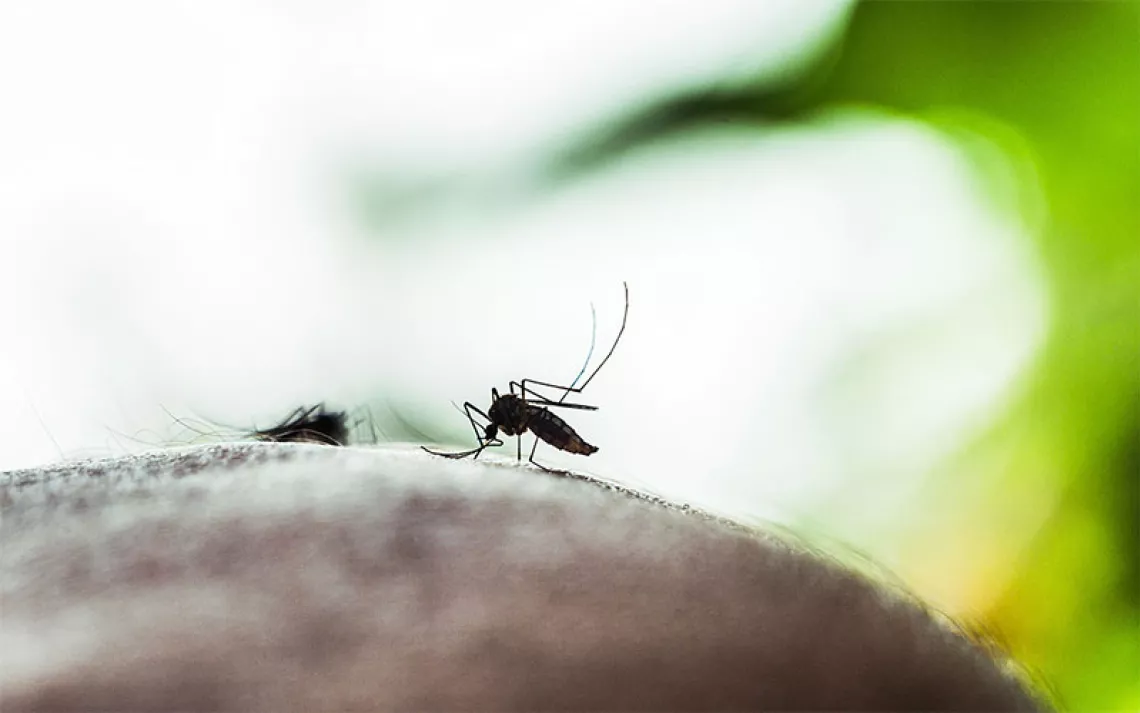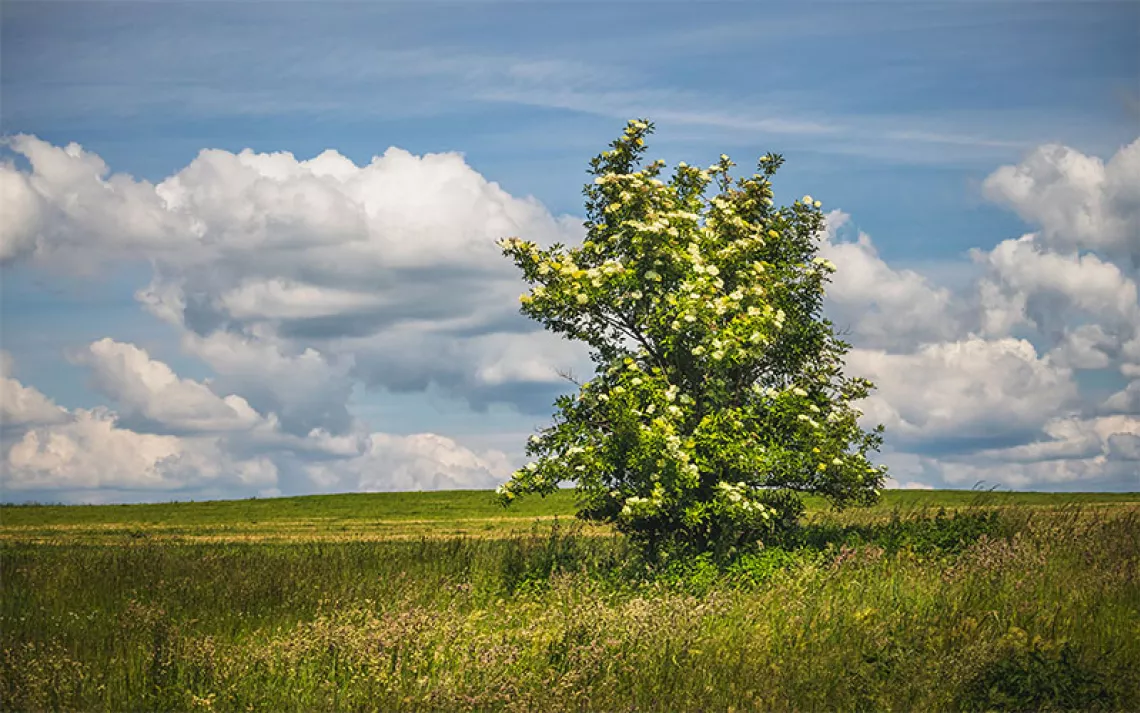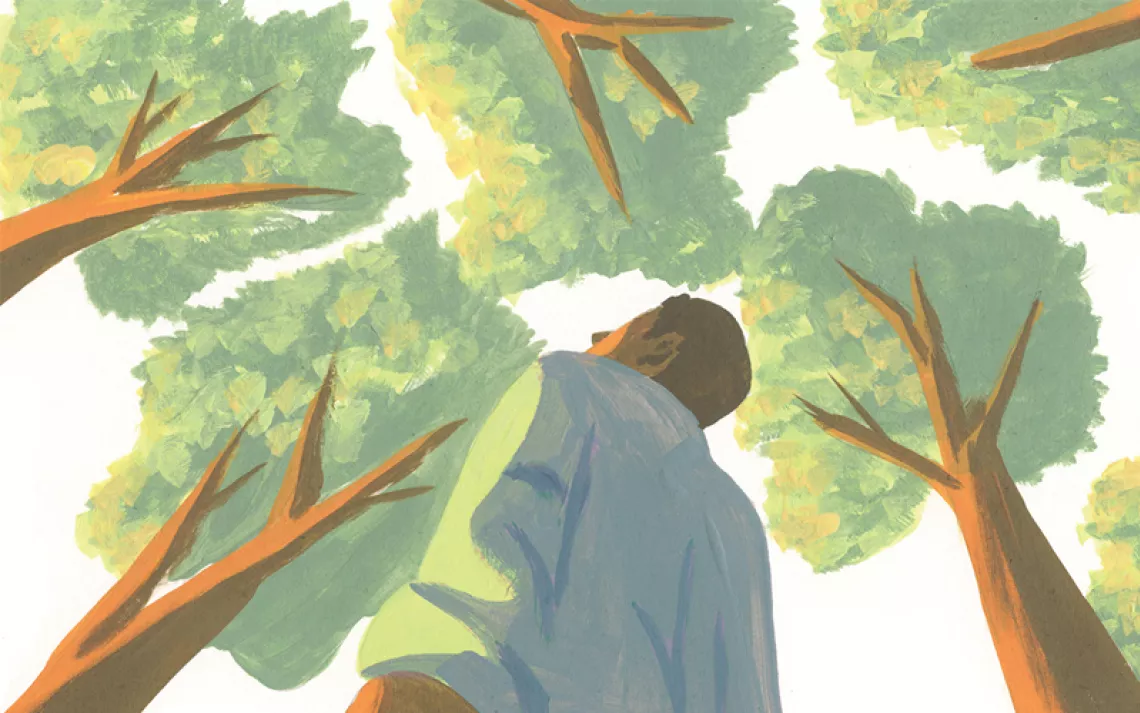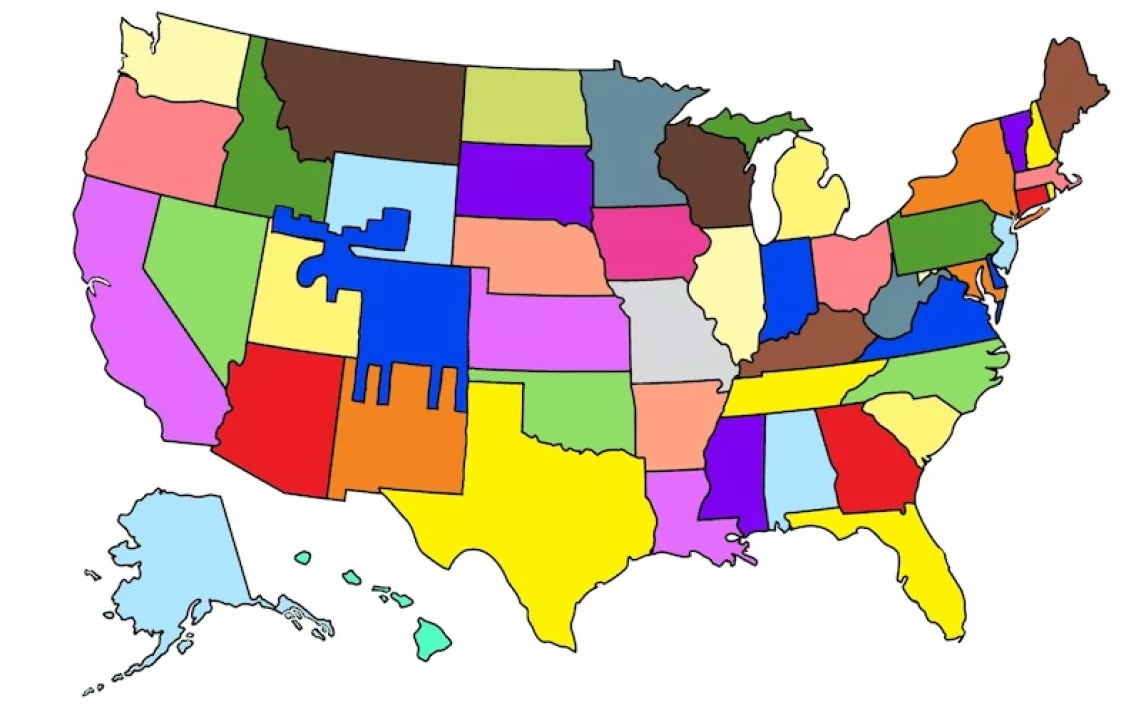Now, Mad Deer Disease
Mad-deer disease, more formally known as chronic wasting disease (CWD), is found mostly in northeast and central Colorado and southeastern Wyoming

Eww, gross!" thought many Americans as they read about the United Kingdom's mad-cow epidemic-all the while contentedly chewing their own hamburgers. The gruesome, incurable disease, which causes dementia and motor-skill loss, has led to 79 human deaths and the preemptive slaughter of hundreds of thousands of cattle. Now a similar condition is making an appearance among game animals in the Rocky Mountain West. Dubbed "mad-deer disease," it may already be responsible for the deaths of three people who are believed to have eaten infected venison.
Both mad-cow and mad-deer disease are transmissible spongiform encephalopathies, in which brain proteins called prions deform, forcing other brain cells to degenerate along with them. Cows get a version called bovine spongiform encephalopathy; sheep get a similar disease called scrapie; and humans contract, very rarely and by an unknown natural process, Creutzfeldt-Jakob disease.
Those thought to have been infected through the consumption of tainted beef have what is called "new-variant CJD." The course of the disease is similar in all species, starting with a little wobbliness or memory loss, then progressing to full dementia and death, usually in the space of a few months.
Mad-deer disease, more formally known as chronic wasting disease (CWD), is found mostly in northeast and central Colorado and southeastern Wyoming, where it infects about 5 percent of mule deer on game farms and 1 percent of free-ranging deer. Infected animals have also been found on game farms in Nebraska, Montana, South Dakota, and Oklahoma. Game farms sell meat and the velvet from antlers (marketed as a health supplement or aphrodisiac), or sometimes ship live animals to other states to bulk up their supply of huntable wildlife. Thus one farm with infected animals could potentially spread the disease far and wide.
In Larimer County, Colorado, the seeming epicenter of the outbreak, some reports put the infection rate of wild deer as high as 15 percent. By way of comparison, says John Stauber, coauthor of Mad Cow U.S.A., "At the height of mad-cow disease in Britain, only one to two percent of cows on any given farm were showing symptoms of the disease." Given the lack of a vaccine and the growing interstate commerce in farmed deer and elk, he says, "the eventual spread of chronic wasting disease across North America seems inevitable."
Mad-deer disease is apparently passed from doe to fawn, as well as through shared feeding facilities, salt licks, and touching noses. It is not yet clear how-and even whether-the disease can spread to humans. Ingestion of infected meat is suspect, as is mere contact with infected tissue, putting both hunters and venison-eaters at risk. Deer in advanced stages of CWD are awkward and slow, making them easier to shoot and more likely to end up on a dinner plate. Moreover, while dressing game, hunters expose themselves to the most infectious tissues, the brain and spinal cord.
Another nexus for transmission may be the rendering process, in which animal carcasses, including roadkill, are ground up as feed for other animals, some of which are then eaten by people. In the United Kingdom, feeding infected cows to other cattle amplified the disease's transmission rate. The U.S. Department of Agriculture has only partly learned this lesson, says Stauber: While it forbids cow cannibalism, it allows the carcasses of deer, elk, and sheep known to be infected with CWD or scrapie to be rendered and subsequently fed to chickens, pigs, and pets. Those animals may be rendered in turn and fed to cattle. Last year, a coalition of public-health groups petitioned the agency to halt the practice-so far to no avail.
Dr. Byron Caughey of the National Institutes of Health has studied the transmissibility of spongiform encephalopathies. While his findings indicate that "there is a substantial [interspecies] barrier" and that the efficiency of transmission between mad deer and humans seems to be low, it may be "in the same ballpark" as that between mad cattle and humans.
Unfortunately, the states in which mad-deer infection is highest also rely heavily on the sale of hunting licenses, making them loath to publicize the possibility that eating venison might turn your brain into a sponge. Currently, detection of the disease requires waiting for an animal to drop dead under suspicious conditions and then relying on hunters or game farmers to call in a vet for a post-mortem rather than simply shipping the carcass to the rendering plant.
"Obviously, when the animals are dying of the disease, it's much too late to have prevented the disease from getting from one animal to another," says Dr. Mary Jo Schmerr, lead scientist of prion diseases at the Agricultural Research Service. "If you could detect it before they show these clinical signs, you could remove them from the flock or herd."
Schmerr thinks she may soon be able to do that with a simple blood test she's developing that can be performed on living animals. In the absence of the widespread use of such a test, you might just want to pass on that venison haunch.
 The Magazine of The Sierra Club
The Magazine of The Sierra Club






